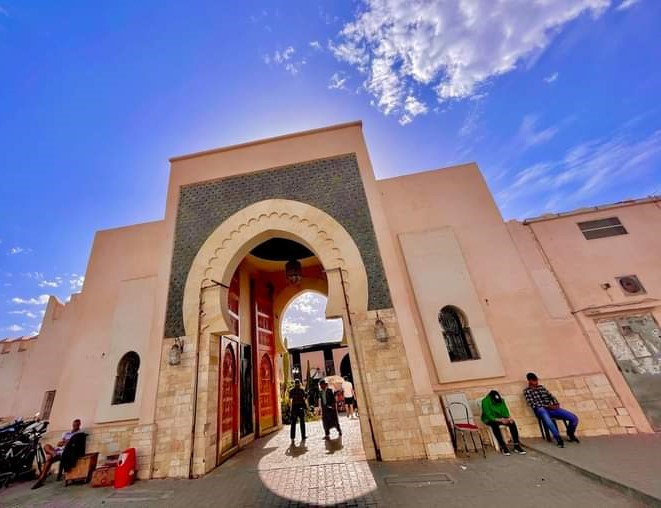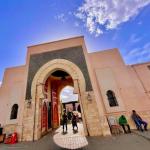Souk El Had of Agadir: A Complete Guide to the Largest Market in Southern Morocco
If you want to experience the vibrant daily life of Agadir beyond its beaches and resorts, Souk El Had is the perfect place to start. As the largest traditional market in the region—and one of the biggest in Morocco—Souk El Had offers a colorful blend of culture, craftsmanship, flavors, and authentic local atmosphere. Whether you’re searching for spices, textiles, handicrafts, or simply a taste of Moroccan life, this bustling souk has something for everyone.
A Brief History of Souk El Had
Souk El Had takes its name from the word “Had”, meaning Sunday in Arabic, referring to the day the market was originally held many decades ago. It has always been a central hub where agricultural producers, artisans, and merchants from surrounding areas came to trade.
After the 1960 Agadir earthquake, the city was rebuilt, and so was the souk. Over the years, it expanded dramatically, becoming the structured, modernized market that locals and tourists know today. Despite its growth, Souk El Had has preserved the soul of a traditional Moroccan marketplace.
Today, it covers more than 11 hectares, with over 3,000 shops, making it one of Morocco’s major commercial and cultural landmarks.
What to Expect: Description of Souk El Had
Walking into Souk El Had is diving into a lively maze of scents, colors, and sounds. The market is enclosed by high adobe-style walls and several gates, giving it the look of a small fortified city.
Inside, you’ll find:
🧺 Artisanal Crafts
Hand-woven carpets, leather goods, ceramics, traditional lamps, baskets, wooden furniture, and locally made decorations. It's an excellent place to buy authentic souvenirs.
🌶️ Spices & Local Products
Fresh saffron, cumin, ras el hanout, argan oil, olives, dates, and traditional sweets. The spice section is one of the most atmospheric areas in the souk.
🥬 Fresh Produce
A huge selection of fruits, vegetables, dates, nuts, and fresh herbs. Locals come here daily to shop for groceries.
👕 Clothes & Textiles
From traditional Moroccan clothing to modern fashion, fabrics, blankets, and scarves.
🛒 Everyday Goods
Electronics, kitchenware, home decor, and countless items useful for daily life—making it a true commercial hub for the city.
Understanding the Layout: How the Souk Is Organized
Souk El Had is divided into sectors, each dedicated to a specific type of product. These zones help visitors navigate the market more easily.
Typical areas include:
Sector A – Fruits and vegetables
Sector B – Clothing and textiles
Sector C – Spices and dried goods
Sector D – Handicrafts and souvenirs
Sector E – Furniture and home decoration
Inside, the alleys are numbered, and large signs help guide you from one zone to another. Although it’s easy to get lost, part of the charm is wandering freely through the souk’s labyrinth of stalls.
Practical Information for Visiting Souk El Had
🕒 Opening Hours
Souk El Had is typically open:
Tuesday to Sunday: 8:00 AM – 8:00 PM
Closed on Monday (traditionally the maintenance day)
Hours may vary slightly depending on season and holidays.
📍 Location
Souk El Had is located in central Agadir, around a 10-minute drive from the beach and easily accessible by taxi or bus.
🚕 Getting There
Petit taxi (cheap and easy; meters should be used)
Bus lines that stop near the souk (often lines 5, 6, or 9)
💰 Prices & Bargaining
Like all Moroccan markets, bargaining is expected. Start by offering around 40–50% of the initial price and negotiate politely. For food items, prices are usually fixed.
🔐 Safety
The souk is generally safe, but as with all busy markets:
Keep personal belongings secure
Beware of overly persistent vendors
Stay hydrated, especially in summer
📸 Photography
Photos are usually fine, but always ask before photographing people or privately owned artisan workshops.
🛍️ What Not to Miss
The spice section
Argon oil cooperatives (look for certified products)
Traditional Moroccan carpets
Local fresh dates and olives
Why You Should Visit Souk El Had
Souk El Had is more than a shopping destination—it’s a full cultural experience. It shows the authentic heart of Agadir, far from the touristy beachfront. Whether you’re a food lover, a photography enthusiast, a culture seeker, or a bargain hunter, the souk will leave you with unforgettable memories.
If you really want to feel the rythm of the city, don’t skip this vibrant and iconic marketplace.





